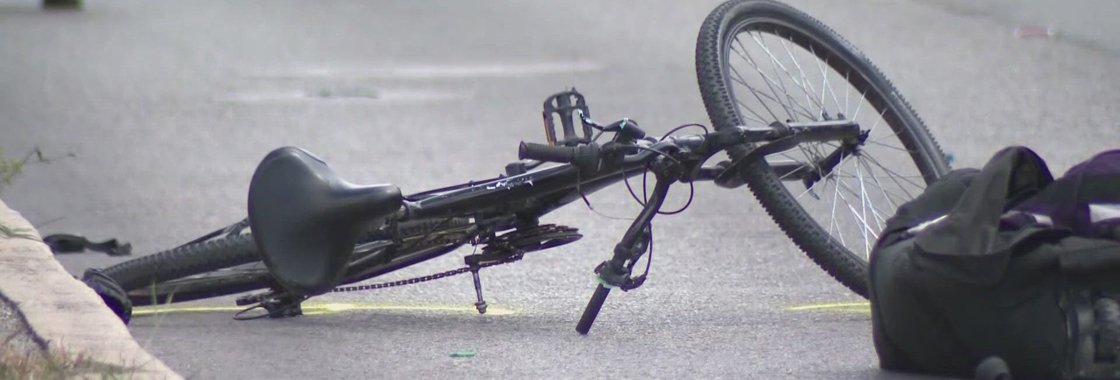Bicycle Motorcycle Injury
Common Injuries in Motorcycle and Bicycle Accidents in Canada
Motorcycle and bicycle accidents have a tendency to produce severe injuries — some with lasting effects. A more detailed look at the most common injuries that have to do with riders and cyclists on roads in Canada follows:

Head Injuries
Traumatic Brain Injuries (TBIs) are the most dangerous injuries, often caused by a blow or jolt to the head. TBIs may vary from a concussion to severe brain injury. Headache, confusion, forgetfulness, dizziness, nausea, and vomiting are the symptoms. Brain injuries account for almost 20% of hospital admissions due to cycling crash, says the Canadian Institute for Health Information (CIHI). A certified helmet will therefore reduce the risk to a large extent. In Ontario, for instance, helmets must be worn by anyone under the age of 18 (Highway Traffic Act, R.S.O. 1990, c. H.8, s. 104).
Neck and Spine Injuries
Whiplash injury is not rare, particularly with acute impact. Whiplash has features of stiffness in the neck, dizziness, headache, and refer pain in the shoulders or back. Profound injury of the spinal cord causes permanent and complete loss of body and limb motor functions.
Note: In areas like Ontario and Alberta, whiplash is categorized under the “Minor Injuries” classification of auto insurance regulation, though payments may vary with severity.
Upper Extremity Injuries
Riders naturally use their arms to absorb a crash, leading to fractures in wrists, arms, or shoulders. Dislocations and major bruising are also characteristic. Pain, swelling, and impaired movement are typical symptoms.
Lower Extremity Injuries
Legs, knees, ankles, and feet are particularly vulnerable. Fractures are particularly frequent when the lower half of the body gets caught under the motorcycle or bicycle during a crash. Sprains, strains, and dislocations also happen. Early treatment is required to avoid long-term mobility issues.
Road Rash
Road rash is a result of exposed skin sliding across pavement when a fall is hit. While often considered superficial, the abrasions are seriously infected if not well cleaned and treated. In the worst cases, skin grafting will be required.
Internal Injuries
Internal injuries are not visible. Hard impacts can hurt internal organs or lead to bleeding. The signs are dizziness, shock, fainting, and stomach pain. Seek immediate medical care even if you’re fine immediately after the crash..
Injuries to the Face
Colliding onto the pavement or other vehicles has a chance of smashing facial bones, displacing teeth, and resulting in significant scarring or facial disfigurement. It diminishes a substantial face injury rate significantly if riders use full-face helmets for motorized bikes and bicycles. According to Transport Canada, annually an estimated 7,500 cyclists become seriously hurt on average, much of which may be avoided if wearing protective devices appropriately.
Understanding Compensation Following a Bicycle or Motorcycle Accident in Canada
Crashes can leave you not only physically injured, but also financially exhausted. You may be saddled with huge medical bills, lost time at work, rehabilitation fees, and long-term lifestyle changes. In Canada, accident compensation usually compensates for three primary areas:
Economic Damages (Material Losses)
Medical Expenses
- Doctor visits
- Surgeries
- Layman physical therapy
- Prescribed medication
- Aid device (e.g., crutches, wheelchairs)
Lost Wages and Earning Capacity
If you are unable to work due to injuries, you can recover lost wages. For long-term injuries, lost earning capacity can be compensated.
Property Damage
Expenses to repair or replace your bicycle, motorcycle, helmet, clothing, phone, and other personal effects that were ruined.
Non-Economic Damages (Intangible Losses)
Pain and Suffering
Physical and emotional pain can significantly impact your daily life. In Canada, non-economic damages are typically capped — the Supreme Court of Canada placed a general limit of about $417,000 on pain and suffering awards (inflated annually for inflation from the initial 1978 limitation in Andrews v. Grand & Toy Alberta Ltd.).
Loss of Enjoyment of Life
You may be paid if injuries prevent you from enjoying activities you previously loved, be it sports, hobbies, or being around the people you care about.
Mental and Emotional Distress
Emotional damage like PTSD, depression, or anxiety following a car accident is real and payable.
Punitive Damages (Rare but Possible)
Punitive damages are awarded to punish horribly negligent conduct — such as:
- A motorist speeding miles over the limit or racing
- Driving drunk or on drugs
- Aggressive or intentional harm toward cyclists or motorcyclists
Punitive damages are rare in Canada and are typically awarded only where the defendant’s conduct is egregious.
How a Canadian Personal Injury Lawyer Can Help
Recovering compensation after an accident involves more than just filing a claim.You’ll need strong evidence to support your case, including:
- Police reports
- Medical records
- Witness statements
- Photographs and videos
- Accident reconstructions
Dealing with insurance companies can be especially problematic. Insurers will attempt to limit their payouts or reject claims outright. A seasoned injury attorney understands how to stand firm and get you the settlement you are entitled to.
What to Do If You’re Hurt in a Motorcycle or Bicycle Crash
- Go to the doctor right away, even if you don’t have any obvious injuries.
- Take pictures: injuries, bike damage, information from witnesses.
- Inform the police of the accident (in most provinces a requirement where injuries occur).
- Consult a personal injury attorney prior to your discussing the case with any insurance adjuster. Receive the Compensation You Are Entitled To!
